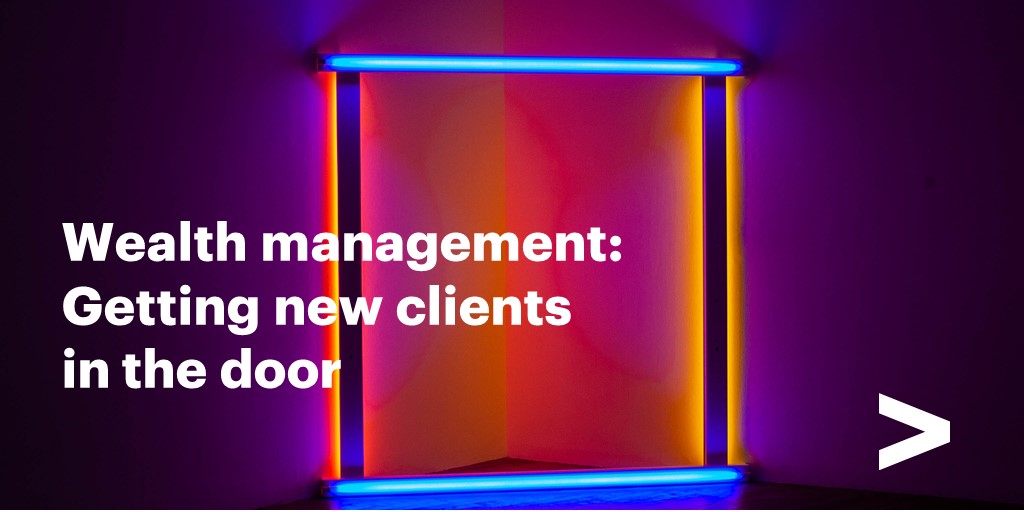
6 Reasons Nobody Reads Your Blog | Digital Marketing Institute
6 Reasons Nobody Reads Your Blog
- Share via:
While 91% of businesses were using content marketing in 2019 not all are getting good effect from it. If you’re disappointed by your blog’s traffic, you aren’t alone.
To be honest, some businesses simply have expectations that are too high – anticipating every post to go viral. However, if after a couple of months of blogging you’re still only receiving a handful of views, it may be time to make some changes. You can learn all about all areas of content with our content marketing course.
In the meantime, the following list shares six reasons why no one is reading your blog. Chances are, if your traffic is miniscule, you’re making one of these mistakes.
1. Your blog doesn’t have a relevant focus
The Digital Marketing Institute prides itself in providing unparalleled digital marketing insights and advice – both through our courses and on the blog.
But what would happen if you arrived at our blog next week to discover we had written the world’s best article on cats?
Regardless of your personal preference toward them, you’d probably be a bit surprised. After all, you came here to learn marketing strategies, not pet grooming tips.
The crux of the matter is this – if we began producing blog articles on random, inconsistent topics every week, we’d quickly lose readers. And rightly so!
If your blog traffic is struggling, the first question to ask yourself is: Does the blog offer content that people actually want, on a regular, reliable basis? While one great article can drive traffic to your site, it won’t necessarily retain those visitors. The purpose of your blog should be to establish yourself as a thought leader on a specific topic. Know what that topic is – and focus on it exclusively.
“Focusing is about saying no.”Steve Jobs
2. Your content simply isn't good enough
Gone are the days when you could write a blog post in 15 minutes and rank at the top of Google. With the plethora of high quality sources and a multitude of content channels available today, readers aren’t willing to put up with mediocre content, nor do they have to.
If the focus of your blog is on track, then take a look at the quality of your content. Does your blog provide value-add, or is it just rehashing what people can learn elsewhere? Would you actually subscribe to your blog, or would you consider it a waste of time?
Poor quality blog posts can turn customers away – so give your readers something worth reading! If you can’t invest enough time to post daily, transition to a weekly or bi-weekly publishing calendar. It’s better to produce one high-quality piece than 10 embarrassingly cheap articles.
To improve the quality of your blog, consider taking consulting our quick guide or, if time is an issue, hire a freelance writer to develop content for you. Just remember that high-quality content is not going to come for pennies. You’re better off paying a premium for one exceptional blog per month then buying a cheap post every day.
If you do your blogging right, the time and money investment is worth it. Content marketing costs 62% less than traditional marketing and generates about 3 times as many leads. so you Invest more time in fewer articles, develop thought leadership content, and watch your following grow.
3. You don't have SEO in mind
Do you remember, back in the day, when you would click on the top Google search result only to find a spammy blog post full of ads and absent of value? Back then, digital marketing consisted of keyword stuffing your blog posts to trick search engines. Even if the article was completely incomprehensible and worthless, the right keyword strategies would get it to the top of search results.
Fortunately that isn’t the case anymore. However, Search Engine Optimization (SEO) is more important than ever. While social media strategies can give a post short-term bumps in traffic, the long-term, residual traffic will come from ranking high in search results.
Although this can’t be done overnight, there are a few things you can do to improve the SEO of your articles and blog posts.
Start by including keyword phrases in titles, subheadings, and within the text. If someone searches for “ways to improve my blog traffic”, a title called “10 Ways to Improve Your Blog Traffic” will usually place higher than a title like “A Blogger’s Journey Towards Discovery and Growth”. Sure, the first title isn’t as creative, but search engines know that it will help the reader. Write your content for people and Google.
Use tools and plugins to help monitor and improve your content’s SEO. One great freemium tool for WordPress users is the Yoast SEO tool, which is recommended and used by thousands of top bloggers. The plugin tracks your keyword usage across titles, within the text, and on images to improve your content’s chances of being ranked well in search engines.
Next, boost the traffic to the blog post through social media, links on your own website, and links from other authority sites. If you’re writing high quality content, people will naturally want to share it – but you can boost your visibility by contacting industry influencers and sharing your new blog post with them. If it would be useful to their audiences, they may very likely mention your site in one of their future blog posts.
4. Your content is too self-promotional
It’s a harsh but largely universal truth: Nobody cares about your company or product. Yes, you might be excited about your new service or speedy growth, but other people don’t care. They’re too busy trying to solve their own problems and satisfy their own needs.
Too many blogs are stuffed with overtly promotional content – making it very clear that the focus is not to provide value to the customer, but to drive sales. No one is going to follow a blog that shares article after article praising their own product. People read blog posts to gain insights or be entertained – not to view ads.
“But isn’t the purpose of a blog to drive sales?”
Absolutely! But blogging is a long-game strategy. Your blog posts should have a Call-to-Action, but that CTA shouldn’t be “Buy, buy buy!”
Instead, provide valuable content that’s relevant to your potential customers. Then, encourage them to subscribe to your newsletter or download a whitepaper with industry-specific advice. Once you have the person’s email address, you can send them a direct email asking if they have any questions about your product or are interested in a trial/discount.
Most of your blog readers will never become customers. But that’s okay. Continue to provide valuable content and those readers will share your posts across their network – increasing the likelihood of being noticed by interested prospects.
Keep your blog focused on education, not sales, and your sales will also improve.
5. Your editorial calendar is irregular
It has become less important to publish a new article every day, with the rise of all those other content channels, like your Twitter and Facebook feeds. But your dedicated readers should at least hear from you on a consistent basis. Remember, content marketing is a strategy – which means a lot of planning should go into it. If the goal of your blog is to lead readers further down the funnel, then part of your content strategy should be consistent publishing. And, your blog posts can provide a lot of the content that will feed our other channels.
It’s all too easy for someone to forget that they subscribed to your blog if they go three months without receiving an update. Then, when they suddenly see an article in their inbox, they disregard it, or worse, mark it as spam.
Many content writers (particularly those that double as small business owners) discover that their creativity and productivity ebbs and flows. One week they could produce two or three pieces of content with gusto! But, after wearing themselves out with this onslaught of articles, nothing else could get published the following week.
If this happens to you, consider scheduling a couple of articles a week, and saving the rest to populate your editorial calendar going forward. If you find yourself with enough content 2-4 weeks in advance, you won’t neglect your readers and will save yourself time and pressure by not having to produce a constant stream of content when it’s simply not feasible.
For a full guide on how to manage your blog posts check out our Tools and Templates for Successful Blog Posts and our Content Planning Template.
6. Your content isn't being promoted effectively
While this is important for everyone, it’s particularly necessary for a new blog. Regardless of how compelling your content is, if you don’t distribute it appropriately, it will never make the required impact.
Your content marketing strategy shouldn’t end when you hit “publish” on your CMS. In fact, this should just be the beginning. Spend the next week posting the article on your social media accounts, email it to subscribers of your newsletter, and personally share it with relevant industry influencers who may be interested in sharing it on social media or linking to it in an article of their own.
No one is going to advocate for your blog more than you – so make sure you’re putting in the time and energy necessary to guarantee its success. And this doesn’t have to be a full-time job. Over 81% of marketers realize an increase in traffic with as little as 6 hours per week invested in social media marketing.
Closing Thoughts...
There’s a reason that 73% of organizations have someone in place to oversee their content strategy – it takes a lot of work! But even a small, one-man-shop can benefit from intelligent content marketing. Commit to consistently publishing high-quality, focused content that provides value, share it across your network, and watch your readership grow.
As long as you use blogging (and not sales or advertising) strategies for your blog, you can expect to see a healthy ROI over time.
(First published June 2016, updated June 2021)










